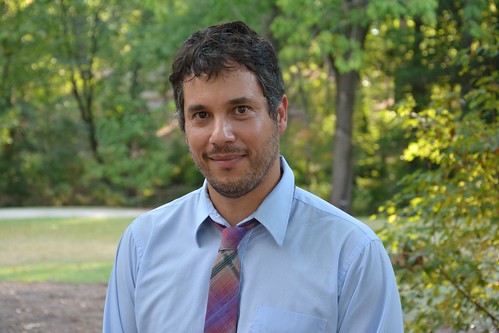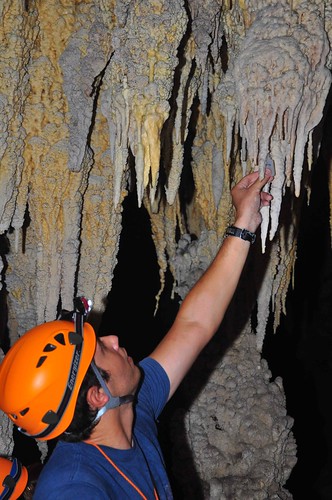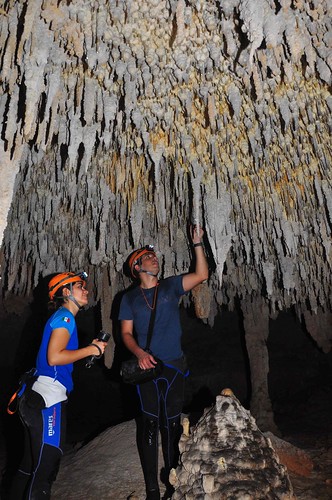COSAM News Articles 2016 September Auburn University researcher links collapse of Maya civilization with lack of hurricanes, reveals benefits of cyclones
Auburn University researcher links collapse of Maya civilization with lack of hurricanes, reveals benefits of cyclones
More than a millennium ago, in what is now southern Mexico and northern Central America, the ancient Mayan empire stretched across an area the size of Texas.
The Maya civilization flourished along the Yucatán Peninsula and built temples now regarded as one of the “Seven Wonders of the World,” until approximately A.D. 1000 when the Maya territory inexplicably disappeared.
For centuries, the collapse of the Maya civilization has both intrigued and puzzled researchers as studies have examined sociopolitical factors, endemic warfare, migration and many other circumstances at the time of the Mayan’s demise.
A recent study by Martin Medina, associate professor in Auburn University’s Department of Geosciences, has determined that drought due to low tropical storm activity could be to blame for the Maya civilization collapse.
“Paleoclimate records discovered in the last two decades show that the Mayans experienced severe drought,” said Medina. “We found that during the collapse, the Yucatán Peninsula in particular experienced eight events of droughts. It rained half as much then as it does today. Knowing what we know about the agricultural systems in the region and how they had to capture water in order to sustain their populations, a drop in precipitation by half would have had important implications for the Maya civilization.”
Medina developed a series of paleoclimate records by looking at stalagmites, calcium carbonate structures that grow in caves from the bottom of the floor, and stalactites, which grow from the ceiling of the cave. These structures are formed from drips of rainfall containing specific minerals.
“The way I see a cave is like a library of climate and environmental information that is waiting to be decoded and tapped into,” said Medina. “We extract the stalagmite, slice it, and inside of the stalagmite, it has growth bands like tree rings, each corresponding to a certain time. We take little samples and measure the proportions of two forms of oxygen in the carbonate, and these tell us how much it rained in the past. The more it rained, the more of one of those forms of oxygen there will be. We can even determine changes in vegetation through pollen found inside the stalagmite.”
Once Medina determined the droughts existed, he and his team then looked at the reason these droughts occurred.
“We found out there is a strong relationship between tropical cyclone frequency and precipitation variability in the region,” said Medina. “When cyclones were more frequent in the region, it rained more in the Yucatán Peninsula and vice versa, when the frequency of tropical cyclones was lower, we found that there was a drought. The droughts coincided with times of low tropical cyclone frequency. Cyclones didn’t bring enough rainfall to bring the region above levels of drought in terms of rainfall.”
Medina says the study forced him to look at tropical storms in a new and different way, and allowed him to assess ways that regions can benefit from a hurricane’s rainfall.
“We never thought of tropical storms as being a positive force until we did this research,” said Medina. “Typically you think of tropical cyclones only as destructive forces in terms of flooding and wind strength. If we are able to overcome the negative impacts, that will allow the natural systems to replenish themselves through tropical cyclones, which they’ve been doing for thousands of years. If you can withstand their negative impacts then you will be able to reap the benefits of their rainfall fluxes.”
Global circulation models predict that by the end of this century, the Yucatán Peninsula will become even drier.
“In the Yucatán Peninsula, a tropical cyclone can produce as much rainfall in three days as it rains in the region over the course of a year,” said Medina. “So, thinking about the future, if the Yucatán becomes more arid and the water table becomes more depleted, due to climate change and human extraction of freshwater, you can think of tropical cyclones as a source of freshwater that can help restore and support agriculture, drinking and hygiene purposes.”
Medina’s theory has implications here in the United States, as well, especially in regions known to experience the devastation of flooding, like Louisiana.
“Flooding is a serious issue for our cities and they are not built to typically withstand dramatic rainfall fluxes like the ones associated with tropical cyclones,” said Medina. “The largest impact from tropical cyclones is in relation to storm surges, or the sea level rising, which causes “waves” to come inland which floods large extensions of continental territory. There are infrastructures that we can develop like higher levies and levies that can withstand a Category 5 hurricane. Doing this will help mitigate the negative impacts from tropical cyclones.”
Medina’s study is selected as the cover story for the September edition of the scientific journal Quaternary Research.
His research is featured in the documentary “In Search of our Lost Future: A Journey to the Past to Find the Key to our Future,” premiering on Spanish television Sept. 30.Latest Headlines
-
02/12/2025
-
02/11/2025
-
02/10/2025
-
01/30/2025
-
12/03/2024




